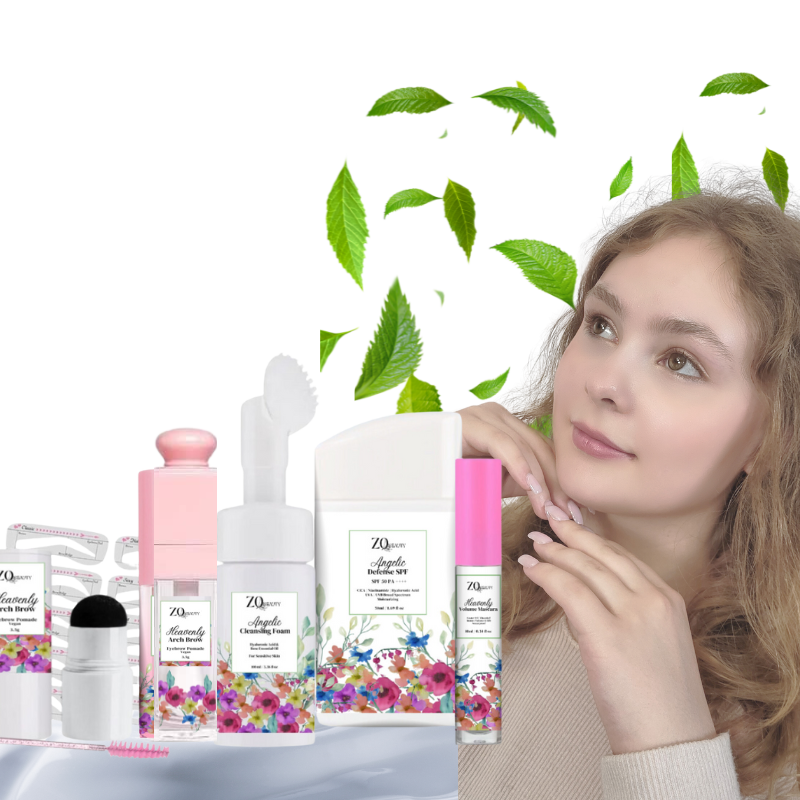Blogs
Nature's Touch For Beautiful Skin
Experience the power of safe and natural skincare
ingredients, designed to help you achieve radiant,
healthy skin.


The Science of Exfoliation – Physical vs. Chemical Exfoliants
Exfoliation is one of the key steps in any effective skincare routine. It helps remove dead skin cells, unclog pores, and promote a brighter, smoother complexion. But did you know there are two types of exfoliation—physical and chemical? Understanding the difference between these two can help you choose the best method for your skin type and concerns.
What is Exfoliation? 🧖♀️
Exfoliation is the process of removing dead skin cells from the surface of your skin to reveal new, healthy skin underneath. Regular exfoliation helps:
✔ Improve skin texture – Leaves your skin soft and smooth.
✔ Unclog pores – Reduces blackheads and breakouts.
✔ Enhance product absorption – Skincare products penetrate deeper into the skin.
✔ Even out skin tone – Fades dark spots, acne scars, and hyperpigmentation.
✔ Boost skin radiance – Gives your skin a healthy, youthful glow.
💡 Tip: Use an exfoliating cleanser like the Brightening Face Scrub to refresh your skin while gently sloughing away dead cells!
Physical Exfoliation vs. Chemical Exfoliation
There are two primary types of exfoliation:
1. Physical Exfoliation (Manual Exfoliation)
Physical exfoliation involves scrubbing the skin using granules, brushes, or tools to manually remove dead skin cells.
✔ Examples of Physical Exfoliants:
Face scrubs with sugar, salt, or coffee grounds
Cleansing brushes
Exfoliating mitts or sponges
Microdermabrasion treatments
🔹 Best for: Normal to oily skin types that can handle some friction.
🚫 Avoid if: You have sensitive or acne-prone skin, as physical exfoliation can cause irritation.
💡 Try the Gentle Exfoliating Scrub for a natural way to slough off dead skin cells without harsh scrubbing!
2. Chemical Exfoliation (Acid-Based Exfoliation)
Chemical exfoliation dissolves dead skin cells using acids or enzymes. It penetrates deeper into the skin to improve texture, tone, and cell turnover.
✔ Types of Chemical Exfoliants:
AHAs (Alpha Hydroxy Acids) – Glycolic acid, lactic acid (great for dry or aging skin)
BHAs (Beta Hydroxy Acids) – Salicylic acid (ideal for acne-prone, oily skin)
Enzyme Exfoliants – Derived from fruits like papaya or pineapple, gentle for sensitive skin
🔹 Best for: All skin types, depending on the acid used.
🚫 Avoid over-exfoliating, as it can lead to dryness and sensitivity.
💡 For a deep, skin-renewing exfoliation, try the Glow Serum with AHAs & BHAs to keep your skin smooth and radiant!
Which Exfoliant is Right for You? 🤔
✔ If you have dry or sensitive skin: Use a mild AHA like lactic acid or an enzyme exfoliant.
✔ If you have oily, acne-prone skin: BHAs like salicylic acid help unclog pores and prevent breakouts.
✔ If you have normal or combination skin: A mix of physical and chemical exfoliation works well.
✨ Tip: Exfoliate 1-3 times per week to maintain healthy, glowing skin—don’t overdo it!
Final Thoughts
Understanding the science of exfoliation helps you choose the right method for your skin type and goals. Whether you prefer a gentle face scrub or a chemical exfoliant, regular exfoliation will keep your skin radiant and healthy!
📢 Want to step up your skincare game? Check out ZQ Beauty for expert-approved exfoliating products designed for every skin type!
